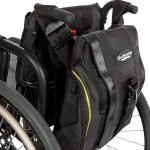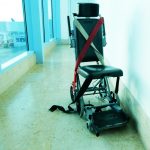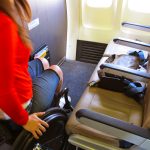For years, wheelchair users have felt like second-class citizens when it comes to traveling. It had reached the point where a lot of people felt trapped in their homes, or dependent on other people to just get out and shop for groceries, or other mundane tasks that the able-bodied take for granted. Travel was tricky with airlines, busses, and coaches making little allowance for the extra space, time, and help required when dealing with a wheelchair user.
However, with the ongoing amendments to the ADA, things have begun to improve. Wheelchair users now have the confidence to apply for jobs they might never have considered before, and to travel more freely. Employers, businesses, public transport firms, shops, and hotels are all bound by strict rules and guidelines with regard to providing access, facilities, and equal opportunities to wheelchair users. Whereas once, it would have been unlikely for a wheelchair user to be seen in many workplaces, changes to the law have meant that accessibility around the workplace and positive discrimination have opened up more opportunities for the less able-bodied. This has obvious benefits for wheelchair users but ADA works both ways. Job vacancies can now appeal to a greater number of applicants and businesses are finding that many highly skilled applicants can now apply for positions, regardless of their disability.
Whilst cost has been an issue, it can also be time-consuming and technically difficult to adapt buildings to accommodate wheelchairs. This can’t be used as a valid excuse for ignoring the needs of a whole sector of the population but in certain cities, it has proved difficult and a lot more needs to be done. For example, London’s Victorian underground system has been notoriously difficult to adapt. New lines and stations have been designed with mobility in mind and many of these include lifts. But a huge majority of these stations are still only accessible by escalator, meaning that wheelchair users simply don’t have access to the full range of transport facilities that the able-bodied do. This seems unreal in this day and age but simple logistics have made the transformation difficult. On the plus side, the London bus network has expanded and all new buses (very few of the old style now remain) are fitted with wheelchair ramps, allowing quick and easy access for wheelchair users, whilst cruises from Southampton and other docks have become much easier for wheelchair users. Around the world, cities such as Curitiba in Brazil have managed to ensure universal access throughout their transport system, making travel easy and stress-free for anyone with mobility issues.
There are now countless websites and resources for wheelchair-bound travelers and specialist travel agencies can arrange holidays for the less-abled to pretty much anywhere in the world. And this doesn’t just extend to beach or pool holidays – wheelchair users can go climbing, abseiling, sightseeing, or partake in pretty much any activity open to able-bodied travelers. The wheelchair dollar is as good as any other and, aside from the issues of inclusion and accessibility for all, there is money to be made from this sector. Hotels and restaurants all over the world are also wising up to wheelchair accessibility and it’s unusual to find a new establishment in any major city that has made no concession for wheelchair users. In the US all new business and public buildings must be accessible and many other countries also have similar laws in place to ensure equal accessibility for everyone.
That’s not to say that wheelchair users can now travel the world unaided; a lot of countries have a lot of catching up to do and it can be incredibly frustrating for the less able-bodied. Simple things like ramps up steps into restaurants, or toilets situated on the entrance levels of buildings would make life infinitely easier. Many adaptations don’t cost very much but small changes can make a big difference to people’s independence and, at the end of the day, greater independence is what it’s all about. Parking facilities and access are the two key areas that need constant consideration and this should be done at the planning stage, without fail.
Whilst changes can take years to come about and, in certain circumstances, wheelchair accessibility simply isn’t feasible, or laws are flouted, there are now plenty of provisions in place to protect the rights of wheelchair travelers and things are only going to get better in the future.

















hi am dealing with accomodation in tanzanis serengeti national park wanted to know the special arrangement i need to get travellers on wheelchair
Please email me, Ashley, at info@wheelchairtraveling.com